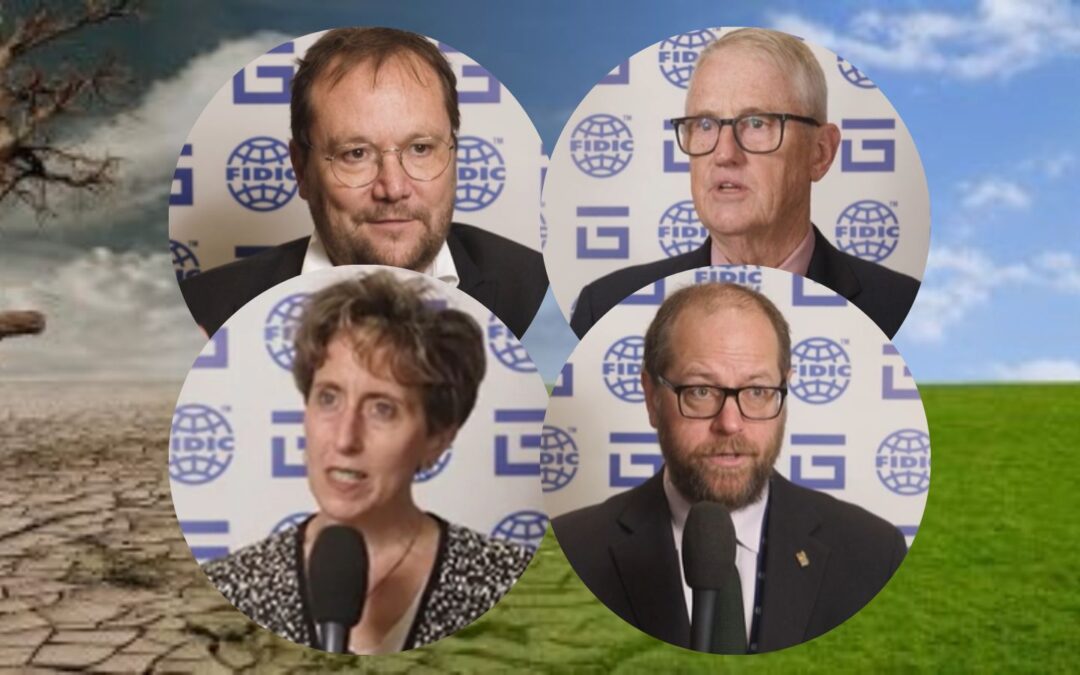The growth of green finance and the potential for sustainability to drive more successful projects, is changing the infrastructure world. We asked industry leaders what that means in practice.
In the last few years, the rise of green bonds and other sustainable finance has been dramatic. So have moves to help determine exactly what constitutes a green investment. As a result, the delivery of infrastructure is changing in ways that everyone across the industry will need to adapt to.
From banks providing lower interest rates for projects who seek sustainability advice, to clients seeking to capitalise on more profitable outcomes from sustainable assets, the change is already being felt and is impacting on how those who design, deliver, operate and own infrastructure do business.
Ramboll Group CEO Jens-Peter Saul is very optimistic about clients taking carbon and sustainability seriously. He explained that while there’s a lot of learning to do, especially on embodied carbon, it’s not just the forward-leaning countries leading on that. He said his company is pleased to see more private sector clients taking it seriously.
Saul is also pleased the finance sector is building that pressure, telling us that Ramboll has teamed up with a large lender who refers clients to them to optimise embodied and operational carbon to improve performance – in return for better finance offers.
With finance and clients starting to push the same way, albeit with some sticking to conventional models that focus on just getting a piece of work done, the decision-making about projects go-ahead and delivery have to reflect these new imperatives.
That is something that AECOM’s Global Head of ESG Advisory, Robert Spencer, has seen a growing focus on. He tells us there is a lot of work to be done around social value and equity – ensuring access to infrastructure – and a lot of work around resilience of infrastructure to make it robust for a world three degrees warmer than it should be, just in case emissions aren’t reduced fast enough.
Part of achieving that may be to introduce more nature-positive solution, which Spencer explains can have a range of co-benefits including carbon sequestration and improved resilience. Ultimately, decision-making of this sort needs to adapt to growing client demand for more sustainable assets.
He suggests that decisions on projects are now about “people, planet, profit”. So firms must get co-benefits and other external factors that haven’t been measured effectively before, integrated into project go-ahead, feasibility, optioneering and implementation.
Ours is not the only industry grappling with sustainability and the infrastructure industry will need to cast a wide net for methods and practices that work well. As Diane Holdorf, executive VP of the World Business Council for Sustainable Development points out, this goes further than just decarbonisation.
She explained that we need to understand material risk and business opportunity as it relates to climate, nature loss and even what it means to having an equitable society – especially in context of urbanisation.
As a result, Holdorf says companies must take the moment to really dig in to what’s material to the business, where they can have the greatest impacts and where can they embed nature into planning and engage greater diversity in their workplace decisions.
By convention, some of the work around this will likely have to be done outside of any one business or client. Regulations and standards are typically set by governments and trade bodies and there is a strong sense that more and more of the industry wants that done – not only to help set a level playing field, but to help inform decisions.
That is a role international engineering federation FIDIC has played before, developing a global suite of standardised contracts, providing training and development, conducting research and promoting awareness of industry best practice. Their president Tony Barry thinks they can do similar with sustainability.
Barry feels the aspirations in the world are generally good and success is now a matter of providing people with the training, the development and the capacity to make necessary changes. That’s something he thinks his organisation can help lead.
One thing likely to emerge from that leadership will be researched evidence of how and when good decisions are best taken to help decarbonise assets – something that clients need to know if they are to meet their own sustainability ambitions. A report is presently being undertaken and will be published in September. So just why does that matter?
Jens-Peter Saul explained that many key decisions about a project – decisions that will determine embodied and operation carbon – are made at the very beginning.
While a project can still optimise later, and while extensions to a completed asset can have an impact too, he said the majority of decisions affecting carbon are made early, meaning that industry demand for sustainability needs good decisions made early.
The post Industry Leaders: Carbon action a client imperative appeared first on Infrastructure Global.

